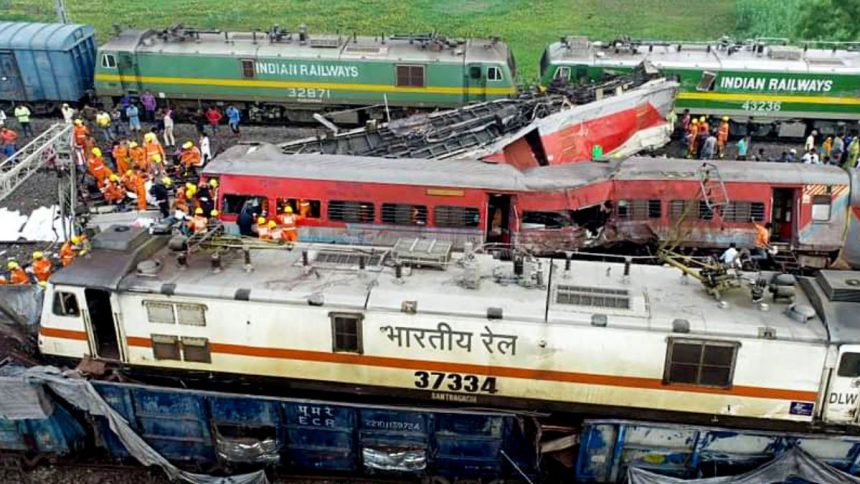Evaluating the ongoing restoration endeavors at the site of the Coromandel express derailment, Railway Minister Ashwini Vaishnaw made a comment on the incident. He said it was attributable to an alteration in electronic interlocking. The horrific Odisha train mishap that took place on June 2 led to the unfortunate demise of 288 passengers.
The calamitous incident, entailing the convergence of two passenger trains and a freight wagon, has left over 1,000 individuals injured.
During an interview with ANI, Ashwini Vaishnaw revealed that the commissioner of railway safety had thoroughly looked over the situation. He successfully identified both the cause of the event and the individuals responsible for it.
However, the focus right now is to restore the damage at the earliest.
Other sources say the mishap occurred due to a “mistaken” signal. Which likely caused the unfortunate. Senior railway authorities conducted a preliminary investigation before disclosing the information. The line on which the two trains collided was described as being “partially corroded” in the report of the Odisha train tragedy.
As per a spokesperson from the railway ministry, the Bahanaga Bazar station comprises four tracks. At the time of the incident, goods trains were stationed on tracks 1 and 4. While passenger trains were operating simultaneously and parallel on tracks 2 and 3. An investigation is currently underway to determine the cause and circumstances surrounding the derailment. Also its subsequent collision with the goods trains. Two rear coaches of the Howrah Superfast train derailed as the impact caused coaches from the derailed train to collapse onto them.
“Kavach” could not have stood as an impenetrable shield against the unfortunate circumstances that unfolded
The Odisha train mishap has underscored the significance of the ‘Kavach’ Automatic Railway Protection (ATP) System. Its potential role in preventing the accident too. However, it is worth noting that the ‘Kavach’ system was not implemented on the specific railway line. Sudhanshu Mani, a renowned railway specialist has stated that the ‘Kavach’ system would not have been able to avert the tragedy in Odisha.
Kavach was unable to prevent this accident. This does not appear to be a case of signaling failure at first glance. The initial train’s derailment appears to be the main factor.
The high-speed nature of the Coromandel Express at the time of the incident made it impossible for the train’s driver to apply the brakes.
The cause of the accident, regarded as the deadliest in India in this century, remains still a mystery at the time.
An NDRF Jawan was the first to provide rescue services with a live location about the mishap
Officials stated that an NDRF (National Disaster Response Force) jawan who happened to be on the Coromandel Express might have been the first individual to alert emergency services. Subsequently, he joined the initial rescue operations to assist in the response efforts.
In the words of NDRF DIG Mohsen Shahedi in Delhi, the dedication of an NDRF jawan transcends mere uniforms. The first NDRF and Odisha state rescue teams took nearly an hour to arrive at the scene. However, within that critical timeframe, an NDRF rescuer emerged as a beacon of hope, leaving no stone unturned to save all the lives he could.
At the moment medical attention and surgical intervention hold the power to work miracles and rescue lives from the jaws of disaster.


